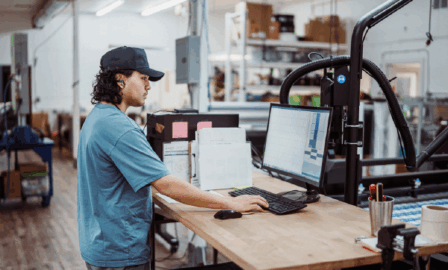Quality Systems Validation Defined for the Consumer Products Industry
Today, I’ve asked Nicole Taylor to discuss the critical components of quality systems validation for the Consumer Products industry. Nicole has over 17 years of experience focused in regulated industries supporting clients in quality systems, validation and computer systems implementations.
When thinking about the importance of validation in the Consumer Products industry the main objective is ensuring consumer safety while producing a consistent quality product. Quality and safety are paramount to the success of any company producing consumer goods, and validation is a critical factor in that goal.
When you google the definition of validation what do you find? At its core, validation is fundamentally the act of proving (often with documented evidence to provide a high degree of assurance) that a specific process will consistently produce a product that meets its pre-determined specifications and quality attributes. Consumers assume that the products they purchase will always produce dependable results, but without validation techniques, this faith could be lost.
There are several components and activities in a validation program that demonstrate its importance within Quality Systems, whether for process, manufacturing, equipment, cleaning, or the software systems that store data supporting the product. Below are a few elements to highlight why validation is an important practice.
- Intended Use: The principles of validation direct a company to define and specify intended use of a process, equipment and/or system and its anticipated outcome. Does your organization understand that intended use facilitates the identification of applicable regulatory requirements? Intended use is captured in documentation such as Requirements and Design Specifications. Successful testing studies trace to specifications to ensure accuracy and completeness, thus proving intended use.
- Regulatory Compliance: If an organization knows the intended use, then it’s easier to determine what regulations are applicable according to the use and desired outcome. Awareness of the applicability and building processes and controls to meet those requirements promote compliance. For computer systems 21 CFR Part 11, regulation applies when there are records in electronic form that are created, modified, maintained, archived, retrieved, or transmitted, under any records requirements set forth in agency regulations (otherwise known as the predicate rule).
- Risk: Companies need to know their vulnerabilities within the product lifecycle. A robust validation program includes a methodology for determining risk (i.e. Quality Risk Management or FMEA). Performing an analysis to determine the level of risks and where things could go wrong identifies where the impact to safety, product quality and compliance is at its highest, where controls need to be established and what mitigation is to be developed and confirmed.
- Training: Establishing and documenting operating procedures to demonstrate that individuals have been trained to those standards is the only way to ensure consistent results in producing a quality product. Validation confirms that individuals have been adequately trained and establishes control before their involvement in a process or access to equipment or computer systems supporting a product.
- Change Control: Validation is the greatest ally in the change control process. It provides ongoing assurance that a process and/or system remains in a state of control during production maintenance, procedure updates and continuous improvement initiatives. Validation is ongoing, and maintaining a validated state should be continuous.
Do individuals in your organization refer to validation as a necessary evil? Can you look beyond validation’s lengthy checks and balances, documentation requirements and its high cost to see the value it provides?
How strong is your current validation program? If you feel you have the correct elements to support daily operations in your product creation, how often do you evaluate their effectiveness in allowing your company to remain complaint with industry regulations while creating safe, effective and quality products?
Read the next blog in this series, Quality Systems Validation: The Right Way with the Right People.



